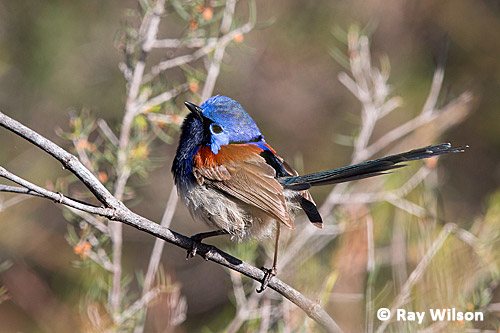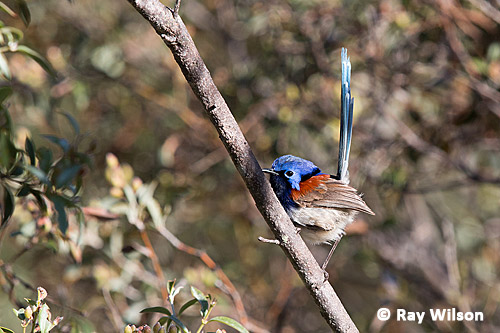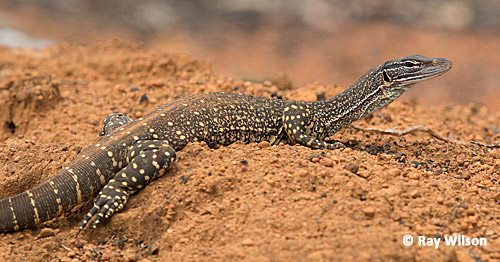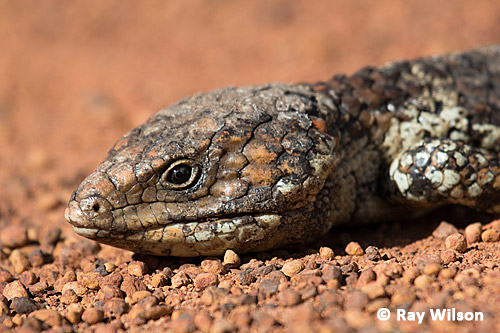
- Home
- Photography Tours
- Diary / Blog
- Galleries
- Foreign Trips
- Tasmania 2016
- NE Queensland 2016
- Western Alps 2016
- NE Spain 2016
- Australia's Wet Tropics 2015
- Australia's Top End 2015
- SW Australia 2015
- Switzerland 2015
- Andalucia 2015
- Belize 2015
- Australia 2014
- Switzerland 2014
- Belize 2014
- Bahama Islands 2014
- Switzerland 2013
- Ecuador 2012-2013
- Florida 2011-2012
- Vancouver Island 2011
- Australia 2010
- Peru 2008
- Bulgaria 2007
- Lesvos 2006
- California 2006
- New Zealand 2005
- Extremadura 2005
- Goa, India 2004
- The Gambia 2003
- About
October 2014
30th October - 1st November 2014
Dryandra, Western Australia
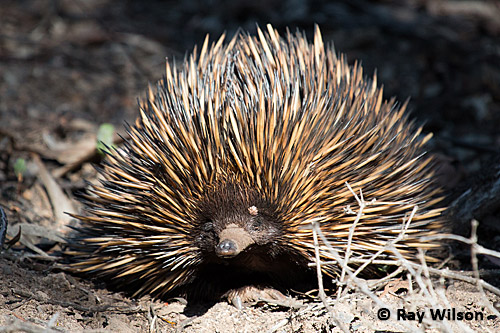
Short-beaked Echidna (Tachyglossus aculeatus)
The extensive woodlands at Dryandra are an excellent spot for finding many of the southwestern endemics and many rare mammals. It probably presents the best chance you are likely to get of encountering a Numbat in the wild and after 3 days of searching I did finally get an excellent view of one digging up a termite nest. My excitement at seeing one the cutest animals in the world, however, quickly turned to massive frustration when I discovered that my camera battery was completely dead and my spares were in my bag in the back of the campervan! I was gutted!!
The only explaination I can come up with for the overnight draining of the battery was that I had accidentally pressed the "live focus start" button, activating the LCD screen and preventing the camera from automatically going to sleep. Nothing drains a battery as quickly as constant LCD screen usage! Needless to say, I have now turned that button's functionality off. I'd never had a problem with it before but I learned my lesson a bit too late for my one and only chance this trip of photographing a Numbat...
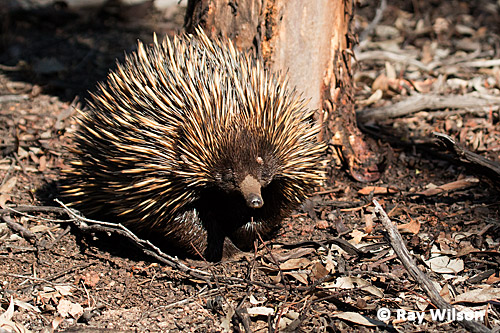
Short-beaked Echidna (Tachyglossus aculeatus)
One mammal that is a lot easier to find is the Echidna. These are common at Dryandra and I during my travels through the forest I encounted several of these bizarre egg-laying monotremes trundling purposefully across the forest floor.
male Blue-breasted Fairywren (Malurus pulcherrimus)
Birdlife can be fairly dispersed and difficult to find at Dryandra, so knowing what micro-habitats your target species prefer is a definite help in narrowing down the best places to concentrate your search. This is precisely how I found the Blue-breasted Fairywrens: I spotted an area of likely-looking habitat while driving slowly along the roads and, when I checked it out, managed to find the fairywrens within an hour. The viewing angle, however, was completely wrong for the light conditions that afternoon, so I noted the position of their territory and went back just after sunrise the next morning to photograph them in the beautiful early morning light.
male Blue-breasted Fairywren (Malurus pulcherrimus)
Western Thornbills were slightly easier as they are pretty widespread throughout the forest and the only difficultly with them was getting these tiny birds to come close enough for a decent image.
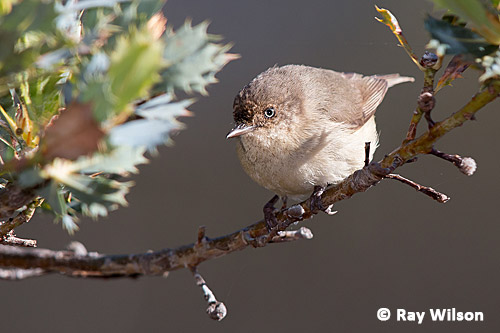
Western Thornbill (Acanthiza inornata)
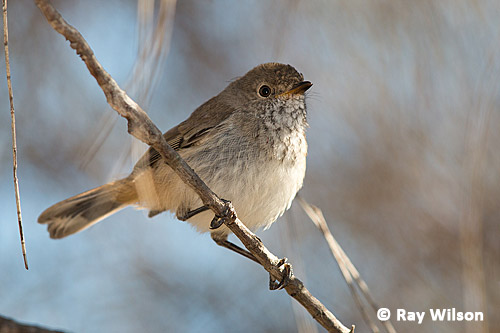
Inland Thornbill (Acanthiza apicalis)
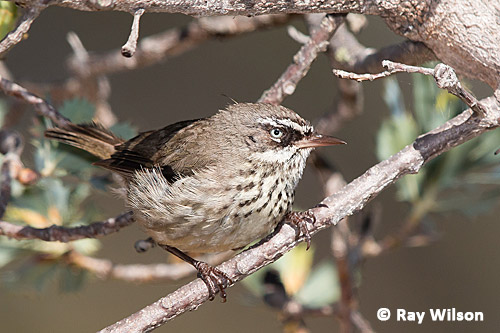
White-browed Scrubwren (Sericornis frontalis maculatus)
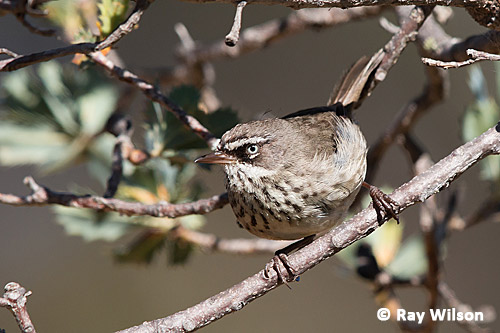
White-browed Scrubwren (Sericornis frontalis maculatus)
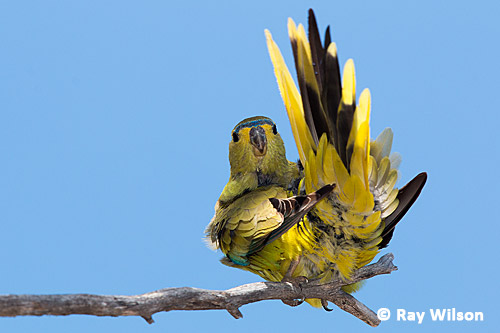
Elegant Parrot (Neophema elegans)
Apart from the ubiquitous Australian Ringneck, which was practically everywhere in the forest, I found Elegant Parrot was the most frequently encountered parrot at Dryandra.
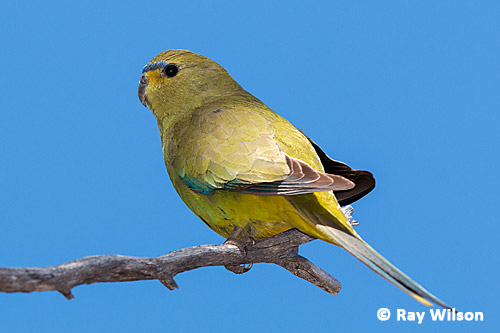
Elegant Parrot (Neophema elegans)
Common reptiles at Dryandra included Sand Goannas and Shinglebacks...
Sand Goanna (Varanus gouldii)
Shingleback (Tiliqua rugosa)
Beautiful, litte Jewel Spiders are absolutely everywhere in the forest and especially seemed to like to string their webs across the open spaces generated by the trails.
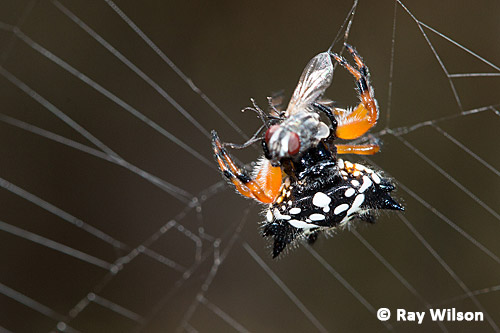
Australian Jewel Spider (Austracantha minax) wrapping a fly caught in its web.
Ray Wilson owns the copyright of all images on this site.
They may not be used or copied in any form without prior written permission.
raywilsonphotography@googlemail.com
